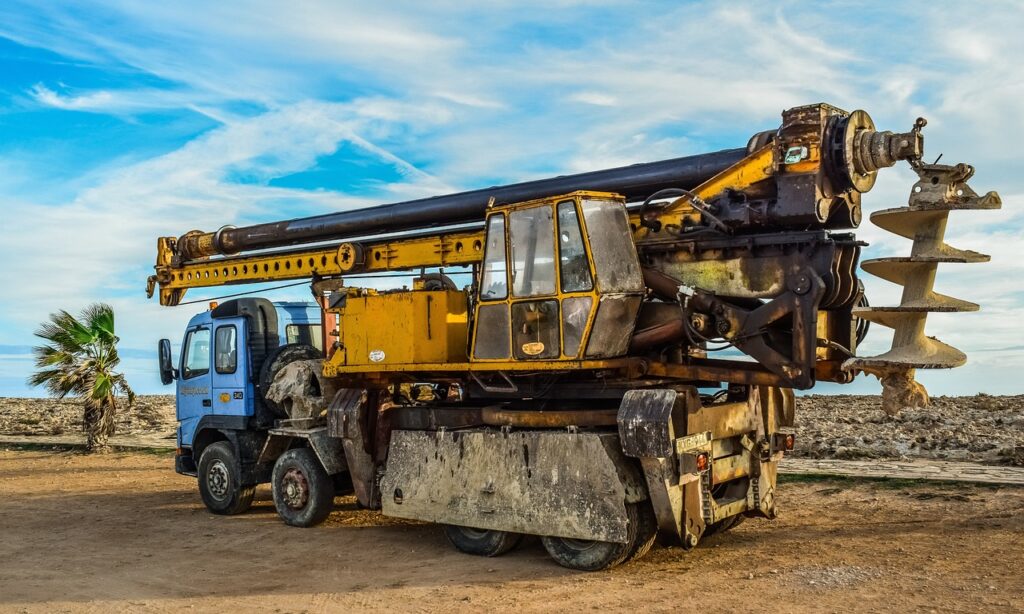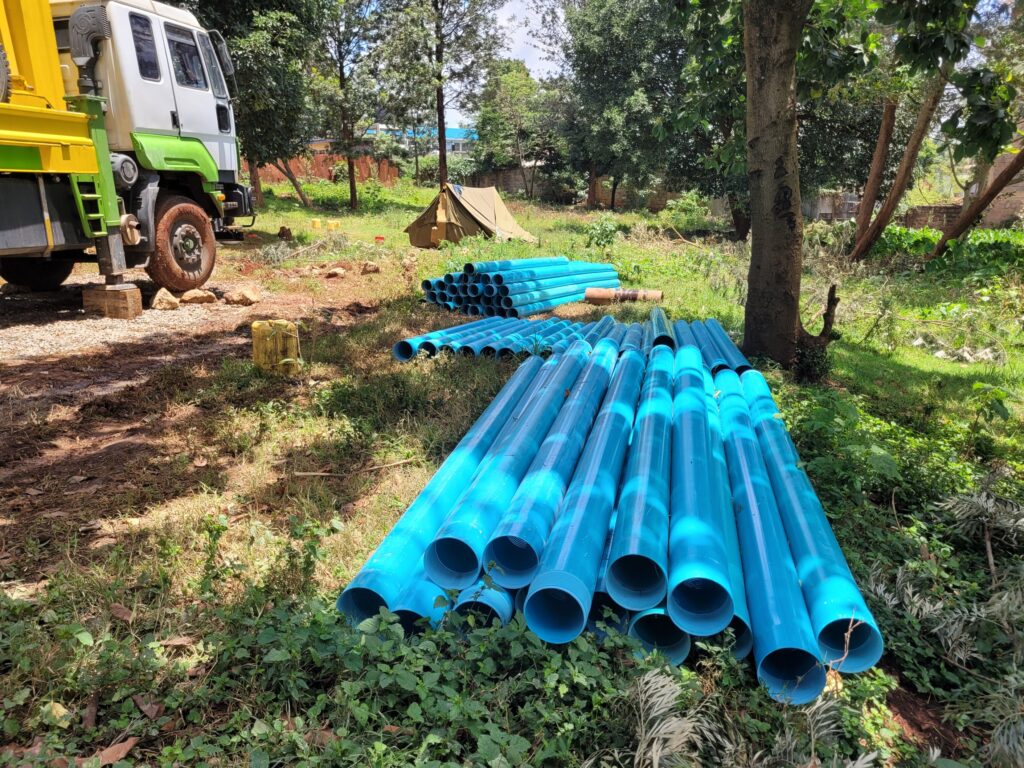Understanding Your Water Access Options in Kenya
In Kenya’s diverse landscapes, from the arid northern regions to the highlands around Nairobi, access to clean, reliable water remains a critical concern for many communities.
As water tables continue to drop due to climate change and increasing demand, many Kenyans with traditional hand-dug wells face a common dilemma: Should they deepen their existing traditional wells using modern drilling technology?
At Bonvic Drilling, we frequently receive inquiries about this seemingly practical solution.
While extending a hand-dug well using a borehole rig is technically possible, our extensive experience across Kenya has shown that this hybrid approach often creates more problems than it solves.
Understanding Traditional Wells vs. Modern Boreholes
Hand-Dug Wells in Kenya
Hand-dug wells have been the backbone of water access in rural Kenya for generations. These traditional wells typically feature:
- Large diameters (1-2 meters wide)
- Relatively shallow depths (rarely exceeding 30 meters)
- Stone, brick, or concrete lining for stability
- Simple bucket-and-rope or hand pump extraction methods
From Kilifi to Kakamega, these wells have served communities faithfully but face increasing limitations as groundwater levels decline, especially during extended dry periods like those experienced in Kenya’s ASALS (Arid and Semi-Arid Lands).
Modern Boreholes
In contrast, machine-drilled boreholes offer:
- Narrow diameters (typically 10-25 centimetres)
- Potentially much greater depths (sometimes exceeding 200 meters)
- PVC or steel casing for structural integrity
- Submersible pump systems for efficient water extraction
Boreholes have become increasingly common across Kenya, with government and NGO programs supporting their installation in water-scarce regions from Turkana to Tana River.
The Technical Aspects of Well Extension
In theory, extending a hand-dug well with a borehole involves drilling from the bottom of the existing traditional wells structure to reach deeper water-bearing aquifers. The process requires:
- Completely draining and cleaning the existing well
- Positioning drilling equipment at the bottom of the hand-dug section
- Creating a narrower hole that extends below the original well
- Installing appropriate casing and pump systems
Pro Tip: Conduct a professional hydrogeological survey before modifying traditional wells. Understanding your specific geological conditions is essential in areas like Kitui or Makueni, where fractured rock aquifers are common.
Why This Approach Is Rarely Recommended in Kenya
1. Alignment and Centering Challenges
It is challenging to position a drilling rig perfectly centered at the bottom of a hand-dug well.
Most hand-dug wells in Kenya weren’t constructed with future mechanical drilling in mind. Even minor misalignments can create serious structural problems.
2. Contamination Risks
During the transition process, contamination becomes a significant concern.
Disrupting the traditional wells structure can introduce additional pathogens and pollutants in regions like Kisumu or Mombasa, where surface contamination is already problematic.
3. Structural Integrity Issues
The junction between the wide hand-dug portion and the narrow borehole section creates a structural weak point. This junction point may collapse over time in areas with unstable soils, such as those in Central Kenya and the Rift Valley.
4. Cost Inefficiencies
What often appears as a cost-saving measure is more expensive than starting fresh.
Our experience drilling across Kenya shows that the additional complications of working within an existing traditional well structure significantly increase labour costs and project duration.
“We tried extending our community’s hand-dug well in Machakos County last year. The process took twice as long as expected, cost nearly 40% more than the original estimate, and we still experienced problems with water quality.” – James Mutua, Community Water Committee Chairman
5. Maintenance Nightmares
Hybrid wells create unique maintenance challenges. Determining whether the problem lies in the hand-dug section or the borehole extension can be tricky when issues arise.
In remote areas of Kenya, where technical expertise is limited, these maintenance challenges become even more problematic.
Better Alternatives for Kenyan Well Owners
Complete Replacement with a Modern Borehole
In most cases, the most cost-effective long-term solution is to drill a new borehole near the existing hand-dug well. This approach:
- Allows for proper site selection based on current hydrogeological data
- Provides access to deeper, more reliable aquifers
- Enables the installation of modern pumping systems
- Reduces contamination risks
- Results in a more sustainable water source
Pro Tip: In Kenya, boreholes drilled to appropriate depths based on proper hydrogeological surveys have success rates exceeding 80% in most regions. Don’t compromise on preliminary research!
Rehabilitating Your Existing Hand-Dug Well
If water table depths permit, rehabilitation of your existing well may be possible through:
- Professional cleaning and disinfection
- Improved lining and surface protection
- Installation of better extraction systems
- Sealing against surface contamination
This approach is particularly relevant in areas like Nyanza or Western Kenya, where water tables remain relatively high.
Modern Hand-Dug Well Improvement Techniques
For communities committed to maintaining traditional wells, modern improvement techniques can enhance performance without the complications of a hybrid approach:
- Infiltration galleries to increase water collection
- Improved filtration systems
- Sealed covers and proper drainage
- Hand pump installations
When Extension Might Make Sense in the Kenyan Context
Despite the general recommendation against shallow-well extension, there are rare circumstances where it might be considered:
Unique Geological Situations
A carefully executed extension might provide access to better-quality water in certain geological formations in parts of Eastern Kenya, where an impermeable layer separates shallow contaminated water from deeper clean aquifers.
Heritage Preservation Requirements
For wells with historical or cultural significance, such as some found in coastal Kenya or around traditional communities, extension might be preferable to replacement for preservation purposes.
Extremely Remote Locations
Working with an existing borehole structure might be the only practical option in Kenya’s most remote areas, where transporting drilling equipment is exceptionally challenging.
Professional Considerations Before Proceeding
If you’re still considering borehole extension despite the challenges, ensure you:
- Consult with a licensed water engineer familiar with Kenyan conditions
- Obtain necessary permits from the Water Resources Authority (WRA)
- Conduct proper hydrogeological surveys
- Consider water quality testing before and after
- Develop a clear maintenance plan
Make an Informed Decision for Sustainable Water Access
At Bonvic Drilling, we’re committed to helping Kenyans access clean, reliable water through sustainable methods.
While we have the technical capability to extend hand-dug wells with borehole technology, our experience across Kenya’s diverse regions has shown that starting fresh with an adequately designed borehole is almost always the better investment.
Consider Your Long-Term Water Security
Water is too important to compromise on quality and reliability. A properly constructed borehole can provide your home, farm, or community with clean water for decades, even as climate conditions change and demand increases.
Ready to Discuss Your Water Access Options?
Contact Bonvic Drilling today for a free consultation!
Our team of experienced Kenyan drilling professionals can:
- Evaluate your current water situation
- Conduct necessary hydrogeological surveys
- Recommend the most appropriate solution for your location
- Provide transparent quotes with no hidden costs
Call us today at: +254-72-0545191 or +254-72-2167999
You can also check our work on
Tiktok
Youtube
About Bonvic Drilling
Bonvic Drilling has provided professional water access solutions across Kenya for over 15 years. From community boreholes in Turkana to agricultural wells in Laikipia, our experienced team delivers reliable water access solutions tailored to Kenya’s unique challenges.
Related Posts
- Borehole Drilling Priorities: Should You Focus on Cost, Speed, or Long-Term Efficiency?
- How to Choose the Best Location for a Borehole on Your Property
- Why a Reliable Borehole is Key to Agricultural Success
- How Often Should Boreholes Be Maintained?
Special Offer for Blog Readers
Mention this article when you contact us and receive a complimentary water quality assessment with any drilling service booked before the end of the month!
Did you find this information helpful? Share it with friends and family who might be considering borehole options in Kenya! Together, we can improve water access across our beautiful country.


